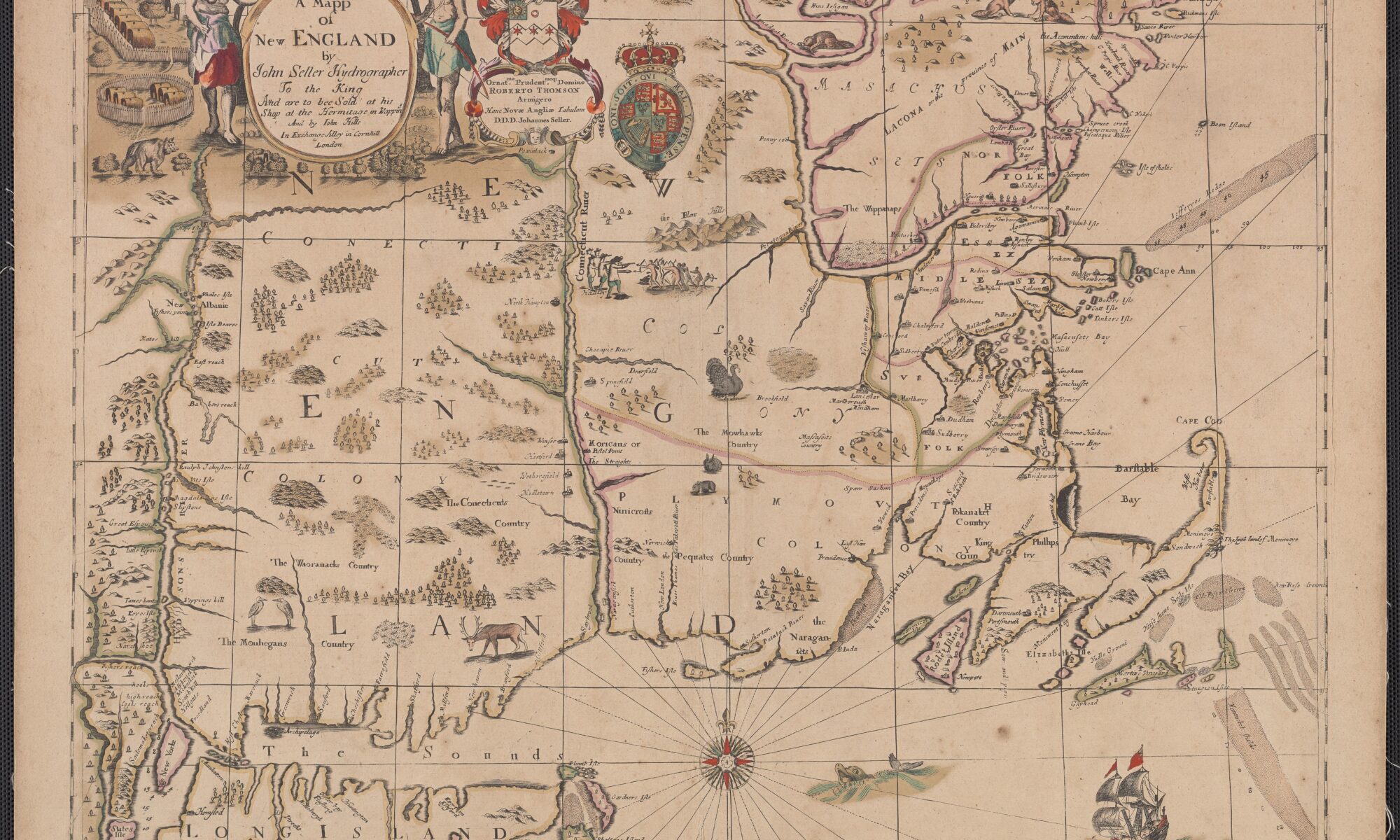What happens when we consider the Eliot Bible not just as a book, but as an object in its own right? Normally, historians treat sources– including especially books– as windows into the past. But books have histories of their own. One of the big ambitions of our group exhibit has been to try to treat the source as an event– to consider the making of the Eliot bible as a episode in the past. And if the making of the bible was an event, other events followed– collecting, preserving, buying, selling, possessing, curating, and commemorating. The projects in this portion of the exhibit speak to these complex histories of the Eliot Bible, including the very curious question: how did this book wind up here?
Ethics in Provenance and Curation
by Nate Passaro and Quinn Searsmith
The University Library’s “Five Millionth Book” was purchased in 1974: it was an Eliot Bible, originally published in 1663 by John Eliot. John Eliot lived in New England and was a Puritan missionary who intended on converting the indigenous Wampanoag people. Therefore, the Eliot Bible was translated into the language of the Wampanoag, Massachusetts. There are several dozen existing copies, one of which is housed by the Rare Books and Manuscripts Library at the University of Illinois Urbana-Champaign.
The purpose of this project is to lay out the history of the Eliot Bible at the University of Illinois from 1974 to the present. Clarifying the circumstances of its purchase reveals the ethical considerations of the time and how they may have impacted future curation. Curation today is itself a difficult topic, one made harder by the issue of decolonization in the face of the history of the University as a land-grant institution.

View the website here
Production and Collection of the Bible
by Tara Leininger, John Landry, Rylee Smith
The Eliot Indian Bible is significant for its historical use by English Puritans to convert Native Americans to Christianity and its linguistic significance as the first translation of the Bible into a Native American language. In many ways, the Eliot Bible is an important piece of evidence when studying the interactions, both collaborative and conflicting, between indigenous American and English colonizers. However, the physical book itself is hardly a collaborative work — the physical features of the Eliot Bible, especially the more noteworthy ones of significant value, follow a strictly English tradition. This dissonance lays the scene for our examination of the production and collection of the John Eliot Bible.
Through detailed comparative analyses, we will argue that the extensive labor used to physically produce copies of the Eliot Bible, some of which were created with more ornate designs for specifically English audiences rather than missionary field work, mark the Bible’s significance as a physical, rather than just metaphorical, product of colonialism. Even today, this artificially created perceived value has created a rich collections history where prestigious institutions fight to collect rare copies of the Eliot Bible, even when their interest in the historical or linguistic significance of the Bible is unclear. In all, we aim to evaluate the unique physical attributes of different copies of the Eliot Bible and to critically analyze the state of Eliot Bible collecting.
View the StoryMap here

The Physical Creation of the John Eliot Bible
by Ivan Nordmeyer, Froy Munoz, Noah Yeager
Our project seeks to explore the creation of the Eliot Bible, analyzing its different components, and what they can tell us about the 17th Century Atlantic economy. Through our research, we have uncovered fascinating ties connecting this book and its production to countless laborers on both sides of the Atlantic. An entire economy has thus been indicated in the colonial movement that produced this Bible. Given such, the scale of this project and the coordinated economic effort it took to come to fruition is just as historically significant as the translation or utilization of the work. By focusing on the paper, ink, binding, printing press, and human publishers of the Eliot Bible, we aim to demonstrate the deep rooted ties that connect this book to the world and moment in time it was created.

View the website here
Making the Bible
by Luigi Laudando and Matthew Thery
The Eliot Bible is famous amongst historians and rare book collectors for its status as the first Bible printed in America. Beyond just this fact, it is important to fully understand the object to know the full extent of its importance. Our research aims to create the story of how the Eliot Bible was made through analyzing multiple components. These include the historical context surrounding the creation of the Bible, the technology that went into making the Bible, and the physical translation of the Bible. These components combine to show that the Eliot Bible is just one piece of a greater history of Puritans in North America and the Wampanoag people.
View the StoryMap here



